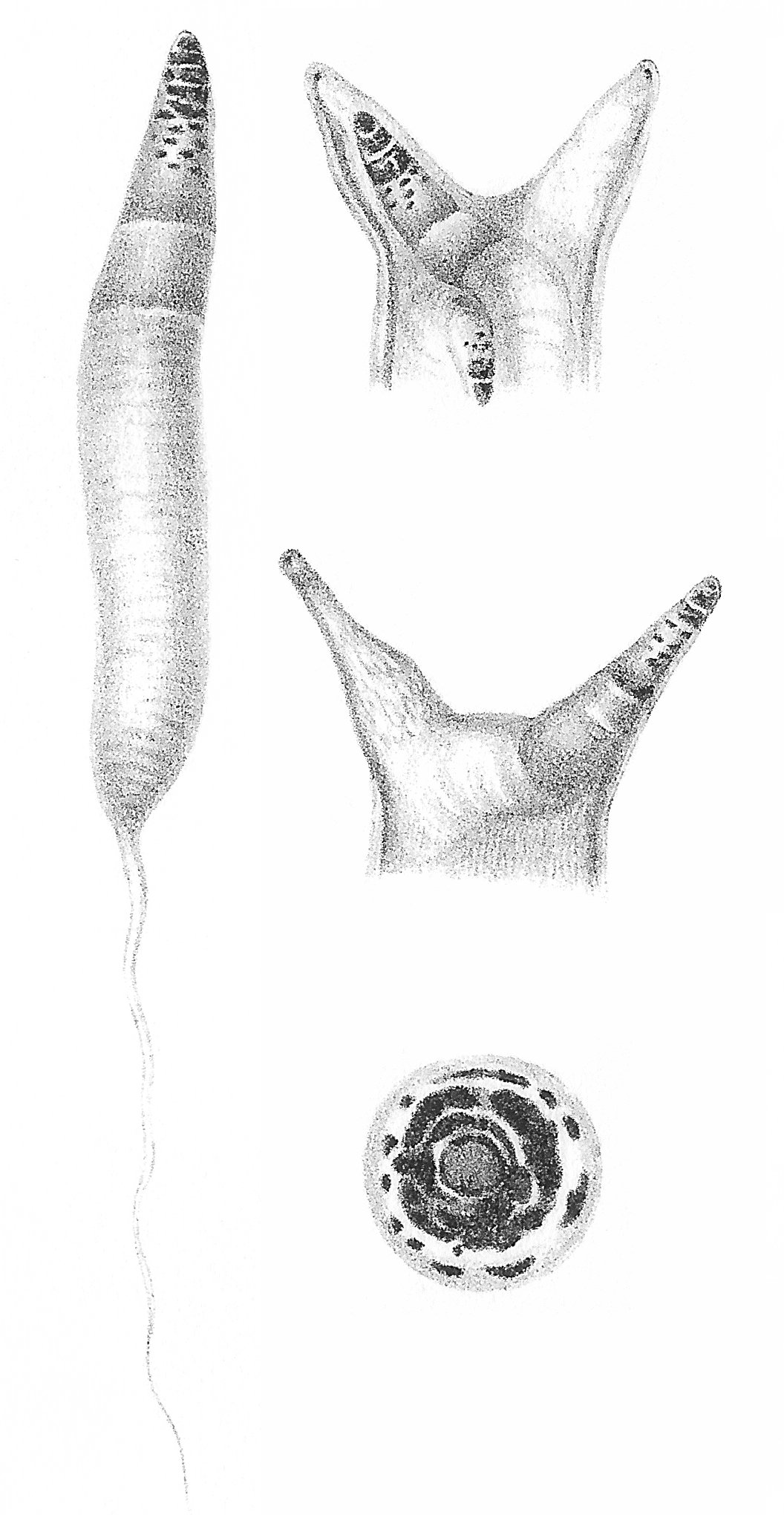- Leucochloridium paradoxum
Taxobox
name = "Leucochloridium paradoxum"

image_width = 250px
image_caption = "Leucochloridium paradoxum", parasite in "Succinea putris "
regnum =Animal ia
phylum =Platyhelminthes
classis = Trematoda
ordo =Strigeidida
familia =Leucochloridiidae
genus = "Leucochloridium "
species = "L. paradoxum"
binomial = "Leucochloridium paradoxum"
binomial_authority = (Carus ,1835 )"Leucochloridium paradoxum" is a parasitic
flatworm (or "helminth") that uses gastropods as anintermediate host .Life Cycle
The worm in its larval, miracidia stage, travels into the digestive system to develop into the next stage, sporocyst. The sporocyst grows into long tubes to form swollen "broodsacs" filled with tens to hundreds of cercariae. These broodsacs invade the snail's tentacles (preferring the left, when available), causing a brilliant transformation of the tentacles into a swollen, pulsating, colorful display that mimics the appearance of a caterpillar or grub. The broodsacs seem to pulsate in response to light intensity, and in total darkness do not pulse at all. [cite journal
author = Edwin J. Robinson, Jr.
year = 1947
month = December
title = Notes on the Life History of "Leucochloridium fuscostriatum" n. sp. provis. (Trematoda: Brachylaemidae)
journal = The Journal of Parasitology
volume = 33
issue = 6
pages = 467–475
doi = 10.2307/3273326] The infection of the tentacles of the eyes seems to inhibit the perception of light intensity. Whereas uninfected snails seek dark areas to prevent predation, infected snails have a deficit in light detection, and are more likely to become exposed to predators, such as birds. Birds are the definitive hosts where the cercariae develop into adult distomes in the digestive system of the bird. These adult forms sexually reproduce and lay eggs that are released from the host via the bird's excretory system. These droppings are then consumed by snails to complete the life cycle of this parasitic worm.The resulting behavior of the flatworm is a case of
aggressive mimicry where the parasite vaguely resembles the food of the host, using this as a ticket into its body. Contrast this with other cases of aggressive mimicry, where only a part of the host resembles the target's prey, and the mimic itself then eats the duped animal.References
See also
*
Leucochloridium variae External links
* [http://www.weichtiere.at/Mollusks/Schnecken/parasitismus/leucochloridium.html Leucochloridium paradoxum]
Wikimedia Foundation. 2010.
